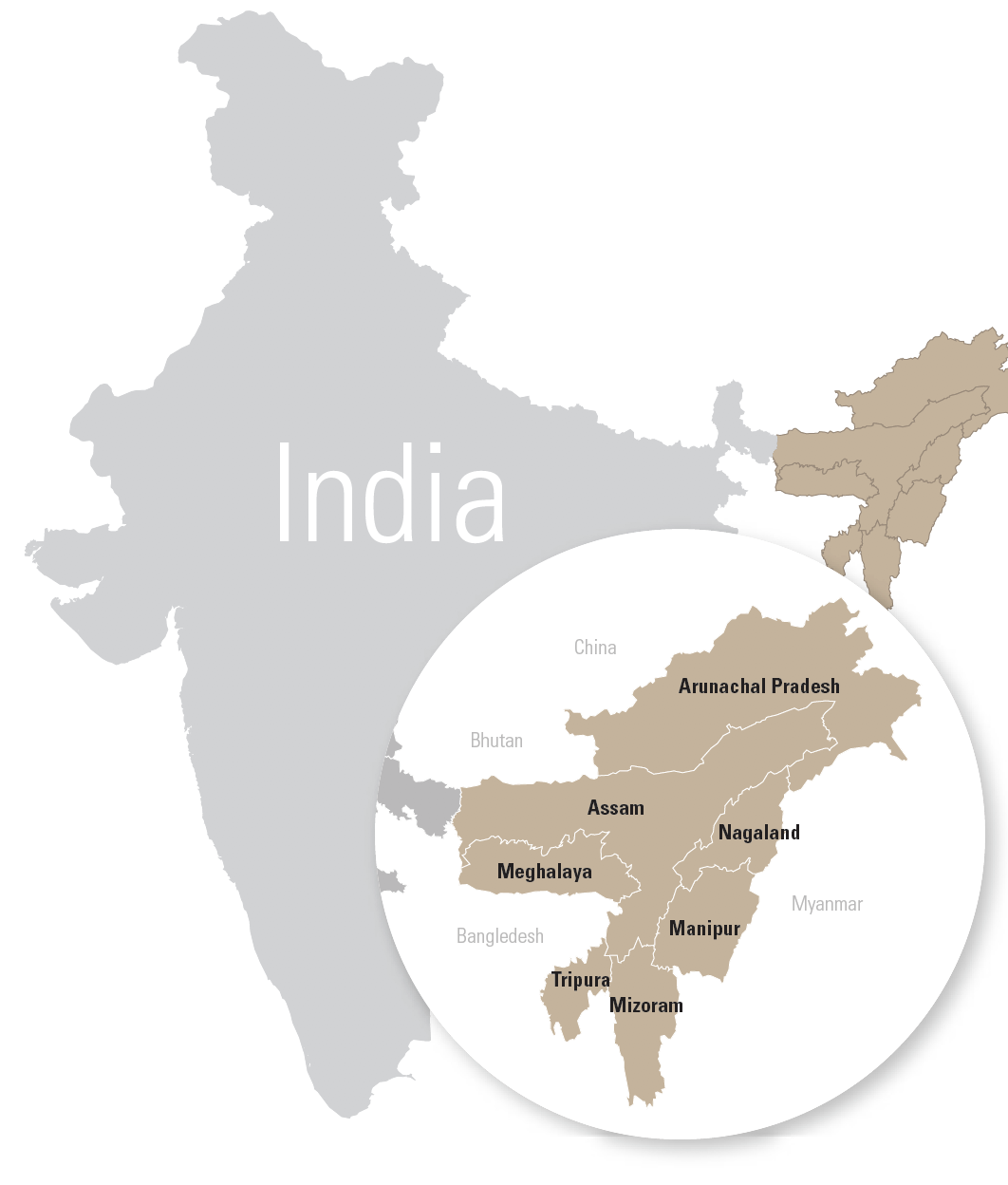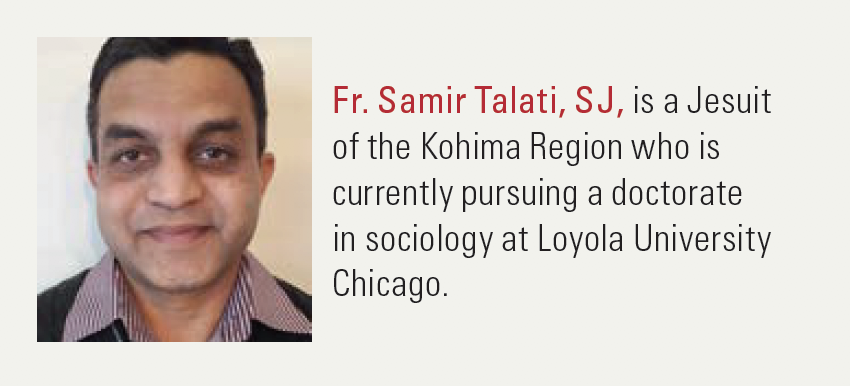By Fr. Samir Talati, SJ
Picture this: A lone Jesuit, or occasionally, in the company of another, sent by his superior to begin a mission in a remote, mountainous region, scouts for a suitable piece of land, and finding one, builds a temporary structure with classrooms, simple dorms, and an administrative office. With time, other Jesuits join him and the mission takes shape. Sound familiar? Well, this has been the standard modus operandi of establishing Jesuit mission centers in northeast India. This process has shaped the history of the “frontier men” of the Kohima Region over the past 50 years.
The mission’s history goes back to 1970 when three Karnataka Jesuits sowed the seeds in Nagaland and Manipur. Over time, the mission has grown into a gigantic tree, spreading its branches across the whole of the Northeast Region. The year 1995 was a milestone in the mission’s history when then Superior General Fr. Peter-Hans Kolvenbach, SJ, inaugurated the Kohima Region. At that time, the Jesuits felt the call to reach out to others in the region, and so began a journey of audacity and perseverance. In the true Ignatian spirit of the magis, Jesuits in Kohima embraced those on the margins of society in the areas where others do not reach and find it difficult to reach. 
The focus and priorities were clear from the beginning—to reach out to the geographical and social peripheries in the most remote areas of the region. The Adivasis and the Dimasas of Assam, the Akas and the Monpas of Arunachal Pradesh, the Garos, the Khasis and the Jaintias of Meghalaya, beside the various Naga groups and the Meiteis of Nagaland and Manipur, provided an apostolic landscape in which the Jesuits were to labor tirelessly. Evangelization and overall socioeconomic development guided their mission objectives. Education, initially primary and later tertiary, became an effective tool to bring about rapid transformation in the lives of the people. Pastoral care corresponded with the education of the young. The social apostolate, with a focus on self-help groups, also enjoyed preference among the Jesuit ministries.
While the Kohima Jesuits have made a deliberate choice to serve those on the geographical and social periphery, the intellectual apostolate is also given prime importance. The North Eastern Social Research Center and Legal Cell for Human Rights have relentlessly provided intellectual impetus to efforts in the region through social research and legal awareness. Efforts are also being made to preserve the endangered languages and cultures of indigenous people. With the northeast being an area of biodiversity, the concern for ecology has also emerged as a major challenge.
Collaboration has been the guiding principle in the apostolic history of the Kohima Region. Religious sisters, teachers, and lay leaders have proven to be the backbone of their mission. Jesuits from other provinces have also shared in the mission. The twinning bond between the Midwest Jesuits remains one of many outstanding collaborative efforts. This partnership has endured for the last 20 years in the spirit of mutuality and has paid rich dividends in every apostolic sense. The universal dimension of the Society of Jesus shines brightly in this collaboration.
The golden jubilee celebration offers the Kohima Jesuits an opportunity to pause with a deep sense of gratitude and reflect on the experience of the past 50 years. The mission exigencies have taught them to be open to the diverse cultures of the region, with the courage to call them “our own.”  The relative remoteness of their mission areas, lack of basic facilities, long rides on bumpy roads, and overwork have not dampened their spirits. Amid all mission challenges, what they have experienced is the boundless providence of God. The indomitable spirit and the undying hope move them beyond the ever-expanding mission horizon where they know the need is the greatest.
The relative remoteness of their mission areas, lack of basic facilities, long rides on bumpy roads, and overwork have not dampened their spirits. Amid all mission challenges, what they have experienced is the boundless providence of God. The indomitable spirit and the undying hope move them beyond the ever-expanding mission horizon where they know the need is the greatest.
Return to Jesuits Spring 2020 Index